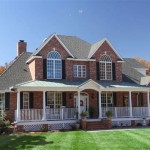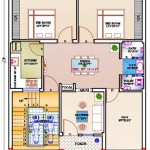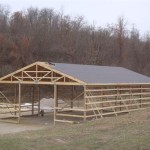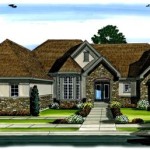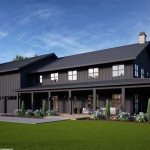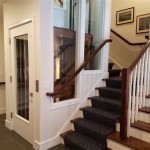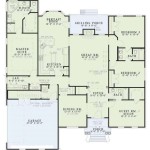Home Plans for View Lots: Maximizing Scenery and Design
Owning a view lot presents a unique opportunity to construct a residence that seamlessly integrates with its surroundings. Designing homes for these properties requires careful consideration of several factors, including maximizing the visual benefits, incorporating appropriate structural support, and addressing potential environmental challenges. This article explores key considerations and design principles for creating home plans tailored to view lots, focusing on effective strategies for optimizing the relationship between the built environment and the natural landscape.
Understanding the Unique Challenges of View Lots
View lots, while offering stunning vistas, often present specific development challenges that require thoughtful planning and execution. The primary challenge lies in balancing the desire for panoramic views with the need for structural integrity, privacy, and protection from the elements. Steep slopes, unstable soils, and exposure to high winds are common concerns that must be addressed during the design phase. Furthermore, local building codes and regulations may impose restrictions on building height, setbacks, and allowable site disturbance, adding another layer of complexity to the design process.
One of the initial considerations is conducting a thorough site analysis. This involves assessing the topography, soil conditions, and prevailing wind patterns. A geotechnical survey is recommended to determine the load-bearing capacity of the soil and identify any potential risks of landslides or erosion. The site analysis will inform the design and foundation strategies, ensuring the home is stable and resilient against environmental forces. Solar orientation is also critical; strategically positioning the home to maximize natural light and minimize heat gain can significantly reduce energy consumption.
Another significant aspect is ensuring privacy. While the expansive views are desirable, they can also compromise the homeowner's privacy. Strategic landscaping, thoughtful placement of windows, and the incorporation of architectural features like strategically placed walls or screens can help mitigate this concern. Understanding the surrounding environment, including the proximity of neighboring properties and roads, is crucial for designing a home that offers both breathtaking views and comfortable privacy.
Finally, view lots are often subject to stringent environmental regulations. These regulations may aim to protect sensitive ecosystems, preserve natural drainage patterns, or minimize the visual impact of the home on the surrounding landscape. Early consultation with local planning authorities is essential to ensure that the design complies with all applicable codes and regulations. This proactive approach can prevent costly delays and modifications later in the construction process.
Optimizing the Design to Capture the View
The central goal of designing a home for a view lot is to maximize the enjoyment of the surrounding scenery. This involves strategically positioning windows, decks, and outdoor living spaces to capture the most desirable views. The design should also consider the changing seasons and the impact of sunlight throughout the day. The incorporation of large windows and sliding glass doors can create a seamless transition between indoor and outdoor living spaces, allowing homeowners to fully appreciate the beauty of their surroundings.
The orientation of the home on the lot is paramount. Prioritizing views from key living areas, such as the living room, dining room, and master bedroom, is essential. Consider using floor-to-ceiling windows or strategically placed picture windows to frame specific scenic elements. In multi-story homes, upper levels often offer the best views, so incorporating a balcony or rooftop terrace can further enhance the viewing experience. Careful consideration should be given to the placement of support beams and other structural elements so they don't obstruct view lines.
The use of open floor plans can also contribute to maximizing views. Open layouts allow for unobstructed sightlines throughout the home, creating a sense of spaciousness and connection to the outdoors. By minimizing interior walls, natural light can penetrate deeper into the home, further enhancing the ambiance. Choosing building materials that complement the surrounding landscape can also help to integrate the home seamlessly with its environment. Natural stone, wood siding, and earth-toned colors can create a harmonious aesthetic.
Outdoor living spaces, such as decks, patios, and balconies, are integral to taking advantage of the views. These spaces should be designed to be comfortable and functional, providing ample seating, shade, and privacy. Consider incorporating features like outdoor kitchens, fireplaces, or hot tubs to create inviting outdoor retreats. The landscaping around the home should also be carefully planned to enhance the views and provide a sense of privacy. Native plants and trees can create a natural buffer, shielding the home from wind and noise while also attracting local wildlife. Minimizing light pollution through strategically placed outdoor lighting can further enhance the night-time view.
Structural Considerations and Foundation Design
Designing homes on view lots often necessitates addressing challenging structural considerations. Many view lots feature sloping terrain, which can require specialized foundation designs to ensure stability. Common foundation types for sloping sites include stepped foundations, pier and beam foundations, and retaining walls. The choice of foundation depends on the soil conditions, the steepness of the slope, and the overall design of the home.
Stepped foundations are a cost-effective solution for moderately sloping sites. This type of foundation involves creating a series of level platforms that step up the slope, providing a stable base for the home. Pier and beam foundations are suitable for steeper slopes, as they elevate the home above the ground, minimizing site disturbance and allowing for natural drainage. Retaining walls may be necessary to stabilize the slope and prevent erosion. These walls should be designed by a qualified engineer to ensure they can withstand the pressure of the surrounding soil.
In addition to foundation design, structural considerations must also address the potential for high winds and seismic activity. View lots are often exposed to stronger winds than homes located in sheltered areas, requiring the use of wind-resistant materials and construction techniques. Similarly, if the view lot is located in an earthquake-prone region, the home must be designed to withstand seismic forces. This may involve the use of reinforced concrete, steel framing, and specialized bracing systems.
Proper drainage is also crucial for preventing water damage and maintaining the stability of the foundation. The site should be carefully graded to ensure that rainwater flows away from the home. Gutters and downspouts should be properly installed to collect rainwater and direct it to a designated drainage area. A subsurface drainage system may also be necessary to remove excess water from the soil around the foundation. Regular maintenance of the drainage system is essential to prevent clogs and ensure its continued effectiveness.
Finally, consider accessibility during construction. Sloping lots can present challenges for transporting materials and equipment to the site. Careful planning and coordination are required to ensure that the construction process is as efficient and safe as possible. This may involve the use of specialized equipment, such as cranes or excavators, and the implementation of strict safety protocols.

Modern House Plan Sloping Lot Contemporary Style 5590 Vista

House Plans With Windows For Great Views
House Plans For View Lots From Visbeen Architects Builder

View Home Sloping Lot Multi Level House Plan 3d 360 Basement Plans Custom
House Plans For View Lots From Visbeen Architects Builder

Home Plans With Lots Of Windows For Great Views

Craftsman Style House Plan 3 Beds 2 Baths 1275 Sq Ft 48 586 Builderhouseplans Com

Hillside House Plan Modern Daylight Home Design With Basement

Plan 23286jd 4 Bed Craftsman House With 3 Car Angled Garage Plans Rustic Lake
House Plans For View Lots From Visbeen Architects Builder

